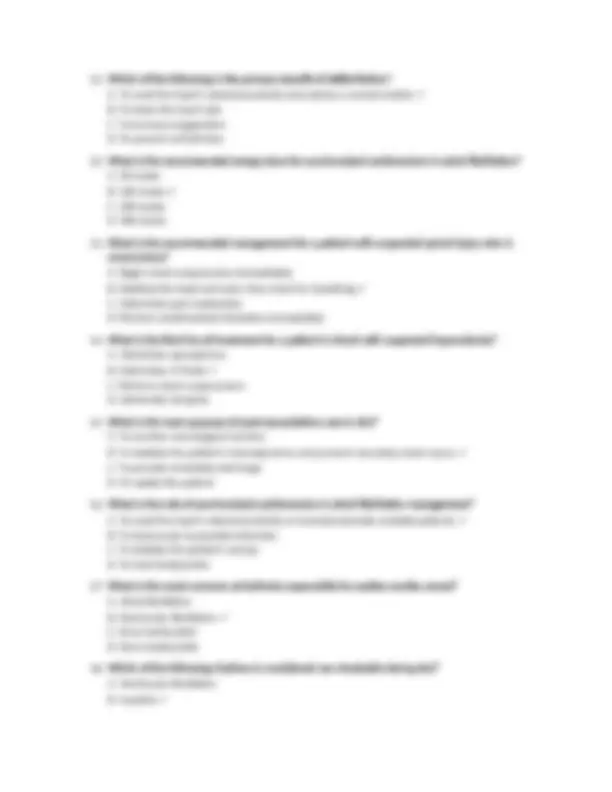





Study with the several resources on Docsity

Earn points by helping other students or get them with a premium plan


Prepare for your exams
Study with the several resources on Docsity

Earn points to download
Earn points by helping other students or get them with a premium plan
Community
Ask the community for help and clear up your study doubts
Discover the best universities in your country according to Docsity users
Free resources
Download our free guides on studying techniques, anxiety management strategies, and thesis advice from Docsity tutors
A comprehensive set of multiple choice questions covering various aspects of advanced life support (als). it tests knowledge of cpr techniques, medication administration, defibrillation protocols, and the management of various medical emergencies. the questions are ideal for medical students and professionals seeking to assess their understanding of als procedures and best practices. the detailed answers provide valuable insights into the rationale behind each correct response, enhancing learning and comprehension.
Typology: Exams
1 / 6

This page cannot be seen from the preview
Don't miss anything!




Advanced Life Support (ALS) General Revision
B. To improve coronary perfusion pressure and circulate oxygenated blood ✓ C. To stabilize the heart rate D. To prevent arrhythmias
B. Use the pads of two fingers for compressions ✓ C. Compress the chest to at least 2 inches D. Use the heel of both hands